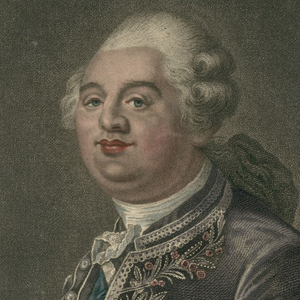Revolutions

Source Collection: Monarchy Embattled
Reality never matched the popular image of the all-powerful French King. Even Louis XIV, exalted by his own propagandists and many historians as the Sun King, never actually enjoyed that kind of authority. Theories of divine right, which linked the King to God, proved untenable for many.

Louis XVI distributes aid to the Poor
Here Louis XVI is portrayed as a benevolent king distributing alms to the poor, an appropriate action for the "Father of his people." However, his rich fur–clad outfit contrasts with the abject poverty of the common people, suggesting to those inclined to be critical that the King did not underst

Louis the Sixteenth, King of France and of Navarre
This portrait demonstrates Louis at the height of his power and authority on the eve of the French Revolution.

Removal of the Parlements
The French Revolutionary engraving's depiction of the physical eviction of the black–robed magistrates in front of a female audience has a somewhat ambiguous message.
Proclamation of the Department of the Seine–et–Oise (9 March 1792)
Despite the radical measures taken by the National Assembly, such as the abolition of nobility and the Civil Constitution of the Clergy, social conflicts continued to manifest themselves after the National Assembly completed its work in 1791.
Letter from Rabaut de Saint–Étienne to the Minister of the Interior (27 February 1791)
In this document, Jean–Paul Rabaut de Saint–Étienne, a Protestant pastor from Nîmes who had been a deputy to the National Assembly and who would later be elected to the National Convention, warns the central government of the ongoing violence in the Midi and the role of refractory priests and rel
Report by the Jacobin Society of Besançon on Refractory Priests
A Jacobin club in Besançon in the Franche–Comté on the eastern borders of France sent this report to the Jacobin Club of Paris on 8 January 1792.

Monks Learning to Exercise.
This image ridicules monks for contributing nothing to society, either economically or demographically, by depicting a group of them being taken from the monastery and drafted into the army, where they hope "to become good citizens" as was expected under religious restructuring during the French

The Third Estate Marrying Priests with Nuns
The National Assembly also eliminated monasteries during the French Revolution, since monks and nuns had increasingly become figures of ridicule. This image depicts the dissolution of the religious orders, rather than the confiscation of lands, as the crucial element in religious reorganization.
Attack on Seigneurial Dues
The petitions from rural communities focused in part on the abuse of seigneurial dues owed by peasants to lords for which, in principle, they received protection and supervision.